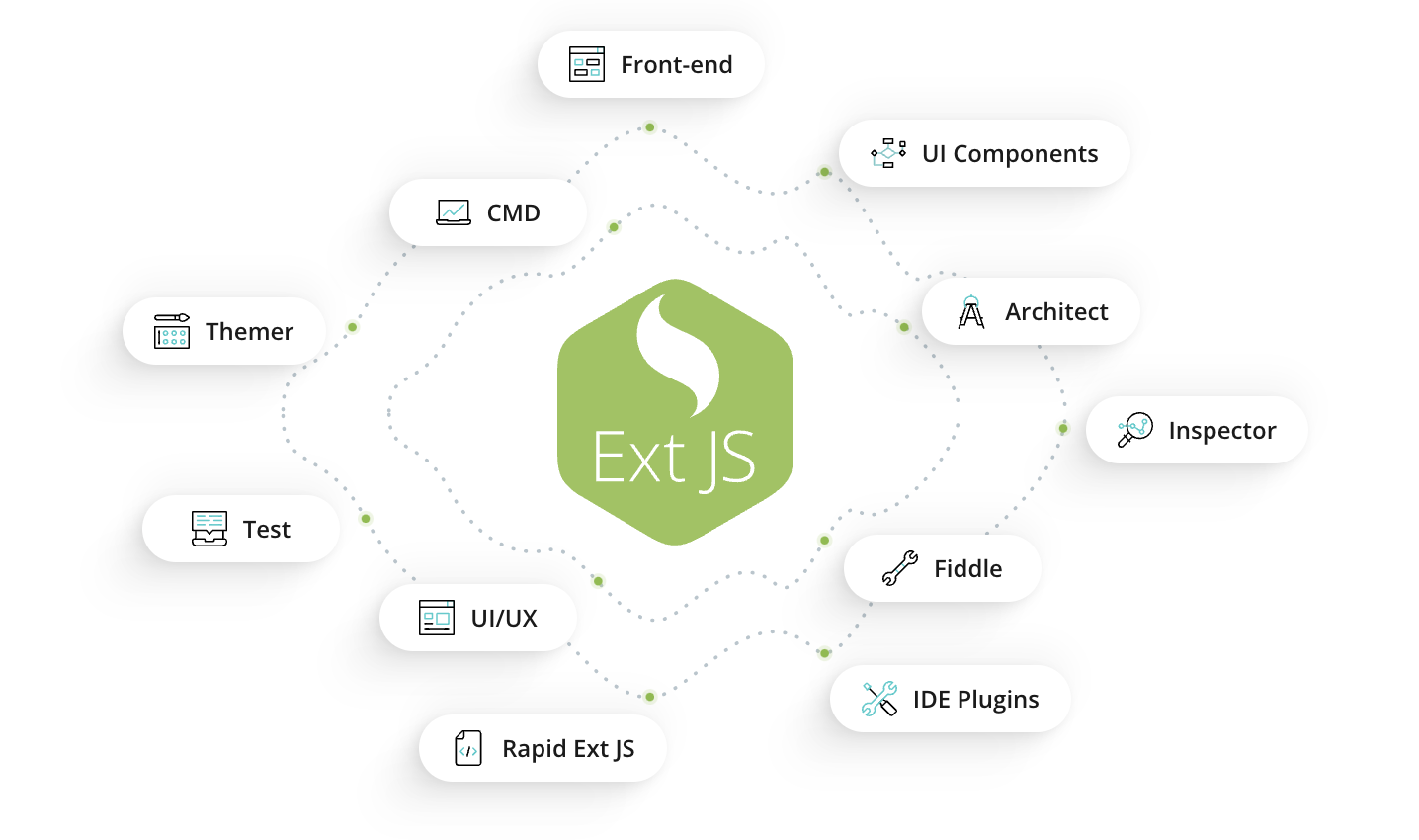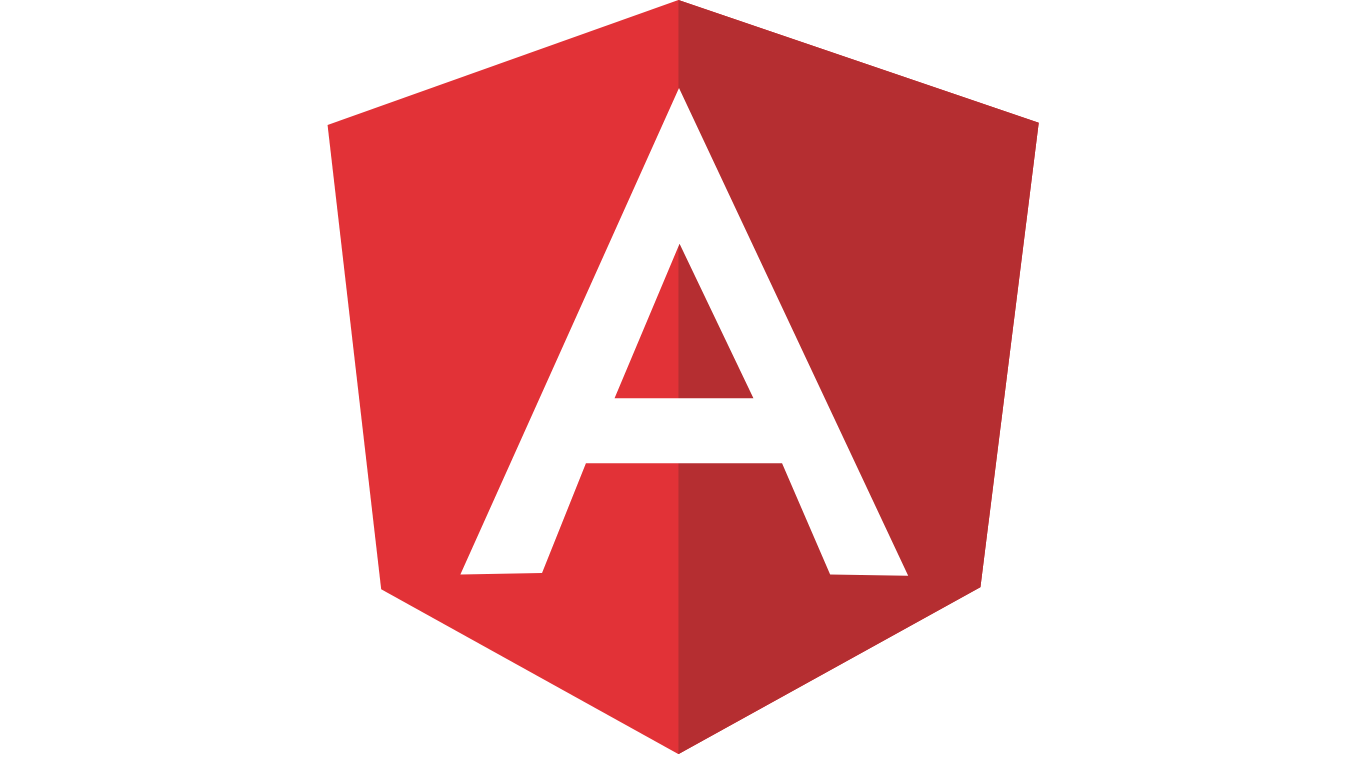Choosing the Best JavaScript Framework In 2025
JavaScript (JS) is undoubtedly the most used scripting language that powers almost all modern websites and web apps, along with HTML and CSS. It enables developers to add interactive elements to their UI that end-users can interact with. As the need for better and more efficient UIs (user interfaces) and faster development is increasing, more and more developers are leveraging front end javascript frameworks. A JavaScript testing framework is designed to simplify and accelerate the front-end development process. However, with numerous new and old JavaScript frameworks available in the market, many developers often find it challenging to choose the right one for their project. This article aims to make this process easier for you. In this article, we’ll discuss various factors you need to consider before choosing a JS framework. We’ll also explore features of some of the best and most popular JavaScript frameworks, such as Ext JS, Angular, and React.
What Does a JavaScript Framework Do?
Building your own JavaScript framework can be a great way to learn core development concepts and improve coding skills. A JavaScript Express framework provides a collection of pre-written JavaScript code libraries and functions for routine tasks involved in web development. This way, developers don’t have to write code for common and repetitive tasks again and again. There are different types of JavaScript most popular frameworks for different purposes, offering different features and functionalities. These frameworks are widely used in modern web development. These frameworks offer various benefits, such as:
- Faster and simpler development process
- Cost and time savings
- Enhanced developer productivity
- Improved efficiency
- Better developer experience
JavaScript Frameworks: Key Features
Component-Based Architecture
Modern JavaScript frameworks support component-based architecture. It involves breaking down the UI into reusable and self-contained components. This means each component has its own style, structure, and behavior. This makes it easier to maintain the app as the changes in one part of the codebase don’t affect any other part of the app. Moreover, developers can reuse components across different parts of an app or across projects. This saves time and enhances productivity.
Data Binding
A good JavaScript backend framework provides powerful mechanisms for data binding. This helps with the automatic synchronization of data between different parts of the application. Different famous JavaScript backend frameworks offer different data binding capabilities. For example, some frameworks support one-way data binding, some support two-way data binding, and some support both.
Two-Way Data Binding: Changes in the UI are reflected in the model and vice versa. Ext JS and Angular offer two-way data binding.
One-Way Data Binding: Changes in the model or state automatically update the corresponding UI elements. However, changes made in the UI do not automatically update the model. React uses one-way data binding.
Routing
Most frameworks include built-in routing capabilities/ solutions. This enables developers to define their app’s navigation structure. Moreover, with routing, developers can map URLs to specific components or views. This allows for the creation of single-page applications (SPAs) with multiple views.
State Management
State management is essentially the process of managing and synchronizing the state (data) of an app across various components. In complex web apps, managing state effectively is essential to maintain app consistency and performance. Good React JavaScript frameworks provide ways to manage state across components. This makes it easier to handle complex state logic, especially in large-scale web apps. State management tools provided by JavaScript frameworks often include:
- Centralized stores and state management pattern
- State management libraries
- Reactive programming paradigms
Difference Between a JavaScript Framework and a JavaScript Library
Understanding the difference between a JavaScript library vs framework is crucial for developers choosing the right tool. JavaScript dashboard frameworks and libraries are often considered the same thing. However, there is a slight difference between these two. A JavaScript UI framework is a comprehensive toolset that provides the foundation for building a web app. It guides developers through the entire application development process. It provides a structured architecture and built-in functionalities like routing and state management. On the other hand, a JavaScript library provides several pre-defined functions that developers can call in their apps to perform specific tasks. These can include DOM manipulation, data handling, or utility functions.
Factors to Consider When Choosing the Best JavaScript Framework

Project Requirements
Consider your project requirements, such as the web application’s size, complexity, scalability and performance requirements. This will help you select the best JavaScript web framework for your specific project. For example, if you’re developing an enterprise-grade web or mobile application involving complex tasks and scalability requirements, you should choose a Javascript framework like Ext JS that is designed specifically for building enterprise-level web or mobile apps. However, if you’re creating single-page web applications, Angular is a good option with data binding and cross-platform compatibility.
Learning Curve and Developer Community
In the highly competitive modern software development world, it’s crucial to create high-performance web applications faster. For this reason, you need to choose an easy-to-use and easy-to-integrate framework. Otherwise, you’ll spend more time learning the framework instead of creating web apps faster. A popular JavaScript library has extensive documentation and additional learning resources. These resources provide details regarding the features, capabilities, and implementation of the framework. This make the integration quick and easy. Moreover, it’s best to assess if the framework you’re choosing has a big developer community. This way, you can ask for help regarding anything related to the framework from other experienced developers.
Performance and Optimization
The best JavaScript MVC framework is designed to work efficiently in different kinds of web apps and handle data seamlessly. For example, Ext JS offers a high-performance JS grid that can process millions of records efficiently without affecting the app’s performance, improving user experience.
Integration With Other Libraries
A common Javascript framework comes with most of the necessary tools developers need to create feature-rich, responsive, and interactive user interfaces. However, you might need additional libraries for data processing, rich text editing, DOM manipulation, and more. Thus, you should assess if the framework supports integration with other libraries. Moreover, you should also check if the framework has its own ecosystem of extensions that allow you to access additional valuable features beyond the framework’s scope.
Long-term Viability
Assessing the framework’s long-term viability is another crucial factor to consider to ensure your app keeps functioning efficiently. For instance, you can check if:
- New and improved versions are released frequently
- New features are added to the framework
- Whether the framework has an active community.
Best JavaScript Frameworks in 2024
Some of the top JavaScript frameworks in 2024 include:
Ext JS

Ext JS is a robust front-end Javascript framework for faster and more efficient enterprise-level web and mobile app development. The popular framework is used by 100,00+ enterprises worldwide, including Apple, Canon, Americal Airlines, and Cisco, to develop highly functional and secure apps. Here are the key features of Ext JS:
- Ext JS offers more than 140 pre-built, high-performance UI components. All the components are highly customizable and fully tested. These components are designed to work together seamlessly in any app.
- The JavaScript framework benchmarks also supports a wide range of charts, area, pie, bar and column charts, and D3 visualizations, such as treemaps and heatmaps, for creating data-intensive web apps.
- Ext JS offers one of the fastest and most efficient JS data grids. The robust grid is pre-tested on a range of browsers and platforms and is capable of handling millions of records efficiently without compromising performance.
- The framework supports both MVC and MVVM (Model-View-ViewModel) architectures.
- Ext JS offers a single codebase for cross-platform app development. It enables you to deliver excellent user experience across desktops, smartphones, and tablets.
- Ext JS comes with detailed documentation that provides all the information you need to understand the framework’s features, capabilities and functionality.
- Sencha also has a Resource Center with numerous whitepapers, webinars, ebooks, and supporting videos.
Also Read: How to implement MVVM architecture in EXT JS web app.
Key Takeaways
✅Over 140 fully tested UI components ❌Paid (however, there is a free community version.) Security comes out of the box. A bit of a learning curve is involved Also Read: A Beginner’s Guide to The Best Javascript Framework
Angular JS

Developed by Google, Angular is a TypeScript-based framework that uses component-based architecture. Angular is widely used for single-page applications.
Key Features
- Easy to extend
- Easy to test
- Great MVC architecture
- Supported by Google
- No Pre-requisite knowledge required
- Easily customizable
- The framework facilitates the development of single-page applications (SPA)
Key Takeaways
✅Open source ❌Less secure Two-way data binding, which allows for automatic synchronization of data between the model and the view Uses regular DOM instead of virtual DOM, which affects loading time.
React JS

Created by Facebook, React is considered the most popular JavaScript framework that enables developers to create JavaScript-based web apps using reusable components.
Key Features
- Uses a virtual DOM (Document Object Model) for rendering Instead of updating the entire DOM when changes occur,
- Promotes a modular and reusable component-based architecture.
- React has a huge developer community
- Offers powerful React developer tools
- Supports one-way data binding or unidirectional data flow. This simplifies data management and ensures predictable state changes.
- Facilitates declarative programming, enabling developers to describe what the UI should look like based on the current app state.
- React Native for mobile applications
- Flux controls
Key Takeaways
✅Easy to Learn ❌Not highly secure Use virtual DOM to optimize rendering performance. Lack of Proper Documentation
Vue.js

Released in 2014, Vue is used for developing cross-platform single-page applications (SPA).
Key Features
- Supports a component-based architecture. Components are reusable and modular. Thus, each component has its own structure, styling, and logic.
- Vue offers a CLI that makes it easier to set up Vue.js projects. It allows developers to scaffold new projects, add plugins, and manage dependencies seamlessly.
- Vue Router provides a powerful routing system for Vue applications. It allows developers to define navigation paths and manage application states.
- Utilizes a reactive data binding system.
- Vue provides built-in directives that enable declarative rendering and interaction with the DOM.
Key Takeaways
✅Easy to learn, even for beginners ❌ Smaller ecosystem and community compared to other top frameworks Highly flexible Lack of scalability/ can face challenges in scaling large applications Check a detailed comparison JavaScript frameworks here.
Why Choose Ext JS JavaScript Framework for Secure Web Development?

Ext JS is one of the leading and most secure JS frameworks for developing high-performance web and mobile apps. It offers advanced built-in security features, enabling developers to implement powerful authentication mechanisms. Ext JS proves to be more cost-effective than open-source frameworks in the long run. For example, research by Dimensional Research shows Ext JS users have saved 50% on front-end development, 75% on annual app maintenance, and 75% on cross-browser and cross-platform development.
Ext JS Successful Case Studies and Real-world Examples
Numerous enterprises use Ext JS and its components due to its impressive features and capabilities. Here are some examples of successful customer stories: A renowned Argentinian hospital utilized Ext JS for an Oncology and Home System, and here is what their lead JavaScript developer, Maximiliano Yusso, said about Ext JS and its grid: “The object-oriented nature of the Ext JS framework and the well-laid-out class structure makes the app versatile and easily scalable. There are no issues with performance since the Ext JS grid and other components work seamlessly with big data.” Kaseware, an investigative platform to combat security threats, utilized Ext JS to design a stunning platform and achieve high-level security in their app development. And here is what the CEO & Founder of Kaseware, Dorian Deligeorges said about Ext JS: “With Ext JS, we were able to better enforce security within our code base. If you are building an Angular app, you are constantly searching for a widget for this and a widget for that. You don’t know if they are maintained or if there is any embedded malware or nefarious code in them. Using Ext JS, we rarely had to go outside the framework, and our platform has some really complex security and functionality requirements.“ Scheuring AG, a Switzerland-based consulting practice service and software development company, used Sencha Ext JS. According to Heinz Scheuring: “The Sencha grid is the key element of resSolution and hyperManager. Ext JS and its other components have really helped us refine our business approach.” – You can read complete case studies here.
Conclusion
JavaScript is undoubtedly the most used scripting language for creating websites and web apps. As a result, Javascript frameworks are becoming increasingly popular. To choose the best JavaScript framework for your project, you should assess the best javascript frameworks by popularity. Here are some other factors to consider:
- The project requirements
- The learning curve and developer community of the framework
- Long-term viability of the framework
- The framework’s ability to integrate with other libraries.
Try The Best Secure JavaScript Framework for Free!
Frequently Asked Questions (FAQs)
What is a framework in JavaScript?
A JavaScript framework essentially provides a set pre-written JavaScript code libraries and functions for common front-end development tasks.
What is the most used JavaScript framework?
React, Angular and Ext JS are among the most used JavaScript frameworks in 2024.
Is Django a JavaScript framework?
Django is a high-level web framework for Python, designed for server-side development.
What Is a JavaScript Framework?
A JavaScript framework is web application development software. It comes pre-programmed with specific codes for tasks. It organizes and contains parts. This allows users to start work efficiently.
Is React a JavaScript Library or Framework?
React is a JavaScript library, not a full framework. It works only with user interfaces. Tools like Redux and React Router make it act like a framework. Not that we’re complaining.
Is JavaScript a Programming Language?
JavaScript is a programming language. It enhances web page functionality. It allows for dynamic features. It works in the front-end, back-end, and mobile applications.
What Does JavaScript Do?
Websites are more dynamic, responsive, and animated because of JavaScript. It updates content. It processes user input. It creates animations. Without JavaScript, web pages would be static.
What Is JS Used For?
JavaScript is also used for mobile applications, games, and servers. It powers frameworks like React, Angular, and Node.js. These are crucial in web development.
Are JavaScript Frameworks Necessary?
JavaScript testing frameworks are optional but useful. They speed up development. They make code efficient. They help organize project structure. Complex projects become easier.
What Is the Most Used JavaScript Framework?
Node.js is popular for backend work. Angular and Vue.js are used for client-side development. React is gaining popularity for everything. It is known as the most powerful.
How to Build a Website Using JavaScript Frameworks?
To build a page with JavaScript frameworks, start by creating components. Manage the state. Set up your project. Deploy your site.
Is It Worth Using JavaScript Framework?
Using a JavaScript web development framework is worth it. It helps build scalable apps. It streamlines code organization. It saves time. It is essential for serious developers.
Which JavaScript Framework Should I Learn?
Beginners should try React or Vue.js. Vue.js is beginner-friendly. For big projects, use Angular. For the backend, use Node.js. Pick based on your needs.

By 2026, Gartner says 80% of apps will be built using low code tools. That’s…

Did you know that nearly 90% of startups fail? And one of the biggest reasons…

The Sencha team is excited to announce the latest Sencha Rapid Ext JS 1.1.1 release…










